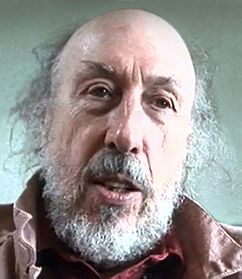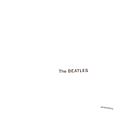Richard Hamilton (artist) facts for kids
Quick facts for kids
Richard Hamilton
|
|
|---|---|

Richard Hamilton, 1992
|
|
| Born | 24 February 1922 Pimlico, London, England
|
| Died | 13 September 2011 (aged 89) London, England
|
| Education | Royal Academy Slade School of Art University College London |
| Known for | Collage, painting, graphics |
|
Notable work
|
Just what is it that makes today's homes so different, so appealing? |
| Movement | Pop art |
Richard William Hamilton (born February 24, 1922 – died September 13, 2011) was an English painter and collage artist. He is famous for being one of the first artists to create Pop art. His 1956 collage, Just what is it that makes today's homes so different, so appealing?, is seen as one of the earliest and most important Pop Art artworks.
Contents
Richard Hamilton's Early Life
Hamilton was born in Pimlico, London. He left school without any special qualifications. However, he found work as an apprentice at an electrical company. There, he discovered he was good at drawing. He started taking evening art classes to learn more.
In 1938, he joined the Royal Academy of Arts. After World War II, he went back to art school. But he was asked to leave in 1946. He then had to do National Service for two years. Later, he studied at the Slade School of Art. After this, he began showing his art at the Institute of Contemporary Arts (ICA). He also taught art from 1952 to 1966.
Becoming a Pop Art Pioneer
In the 1950s, Hamilton's art was influenced by a book called On Growth and Form. In 1951, he created an exhibition called Growth and Form. It showed scientific models and diagrams as art.
What is Pop Art?
In 1952, Hamilton joined a group called the Independent Group. Here, he saw collages by Eduardo Paolozzi. These collages used images from magazines and ads. They are now seen as the very first examples of Pop Art. Pop Art is an art style that uses images from popular culture. This includes things like advertisements, comic books, and everyday objects.
Hamilton was also inspired by another artist, Marcel Duchamp. Hamilton helped design art shows at the ICA. He also taught art at Newcastle University. Some of his students became famous artists and musicians, like Bryan Ferry from the band Roxy Music.
Exploring Technology and Hollywood
In 1959, Hamilton gave a talk about movies. He talked about how Hollywood used technology to make films look amazing. He continued this idea in the 1960s. He made paintings inspired by movie pictures and ads.
Hamilton also worked on a book about Duchamp's notes for his famous artwork, The Bride Stripped Bare by Her Bachelors, Even. In 1955, Hamilton had an art show that honored Duchamp.
Creating Just What Is It That Makes Today's Homes So Different, So Appealing?
In 1956, Hamilton created his most famous collage. It was called Just what is it that makes today's homes so different, so appealing?. He made it for an exhibition called This Is Tomorrow. This artwork used pictures from American magazines and ads. It showed a modern living room with many symbols of consumer culture. This collage is a key artwork in the history of Pop Art.
After the success of This Is Tomorrow, Hamilton taught at the Royal College of Art. He helped artists like David Hockney and Peter Blake. Hamilton was also interested in politics. He made art about the Campaign for Nuclear Disarmament.
Working with New Materials
Hamilton often used materials from everyday life in his art. He even put pieces of plastic into his collages. Using plastics was new for art. It sometimes caused problems because the plastic could crack. Hamilton worked with experts to fix his art and find better ways to use plastics.
In 1962, his first wife died in a car accident. To help himself, Hamilton traveled to the United States. He met Marcel Duchamp there. Hamilton then helped organize the first big show of Duchamp's art in Britain.
Art and Music Connections
In the mid-1960s, Hamilton became friends with Paul McCartney from The Beatles. Hamilton designed the famous white cover and poster for The Beatles' White Album in 1968.
Later Works and Exhibitions
In the 1970s, Richard Hamilton became well-known around the world. He had many major art shows. He also started living with painter Rita Donagh.
Art Meets Technology
Hamilton was always interested in new technology. He used it in his art. He made a painting that had a radio receiver inside it. He also designed the outside of computer models. In the 1980s, he designed two computer cases. Later, he used digital tools like the Quantel Paintbox to create and change his art.
Hamilton also worked with artist Dieter Roth in the late 1970s. They created art together, which showed that art doesn't always have to be made by just one person.
Revisiting Famous Artworks
In 1992, the BBC asked Hamilton to remake his famous Just What Is It That Makes Today's Homes So Different, So Appealing? This time, he showed what a typical home in the 1990s might look like. Instead of a male bodybuilder, he used an accountant. For the female figure, he used a female bodybuilder.
Art About Important Events
In 1981, Hamilton started a series of three paintings about the conflict in Northern Ireland. He saw a TV show about prisoners protesting.
- The citizen (1981–1983) showed an IRA prisoner.
- The subject (1988–89) showed a member of a group that wanted Northern Ireland to stay part of the UK.
- The state (1993) showed a British soldier.
Illustrating a Classic Book
For many years, Hamilton worked on drawings for James Joyce's book Ulysses. In 2002, the British Museum showed an exhibition of these drawings. Hamilton had started sketching ideas for this book back in 1947. He kept working on them for over 50 years. He used different art styles to match the complex writing in the book.
Richard Hamilton passed away on September 13, 2011, at 89 years old. He was working on a painting called Le chef d’oeuvre inconnu – a painting in three parts when he died.
Major Exhibitions
Hamilton's first art show was in London in 1955. In 1993, he represented Great Britain at the Venice Biennale, a very important art event. He won a special award there called the Golden Lion.
His art has been shown in many big museums around the world. These include the Tate Gallery in London, the Solomon R. Guggenheim Museum in New York, and the MACBA in Barcelona. He also took part in important group shows like Documenta in Germany and the São Paulo Art Biennial in Brazil.
In 2010, the Serpentine Gallery showed his political artworks. Just before he died, he was helping to plan a major show of his art at Tate Modern in London. This show opened in 2014 and looked at all his different types of work.
Where to Find His Art
The Tate Gallery in London has a large collection of Richard Hamilton's art from his whole career. The Kunstmuseum Winterthur in Switzerland has the biggest collection of his prints in the world.
Awards and Recognition
Richard Hamilton received many awards for his art. Some of these include:
- The William and Noma Copley Foundation Award (1960)
- The John Moores Painting Prize (1969)
- The Leone d’Oro at the Venice Biennale (1993)
- The Arnold Bode Prize (1997)
- The Max Beckmann Prize for Painting (2006)
In 2000, he was made a Member of the Order of the Companions of Honour. This is a very special award in the UK. A building at Oxford Brookes University is named after him.
Images for kids
See also
 In Spanish: Richard Hamilton (artista) para niños
In Spanish: Richard Hamilton (artista) para niños


